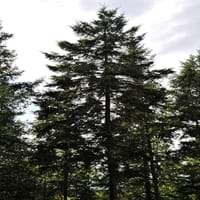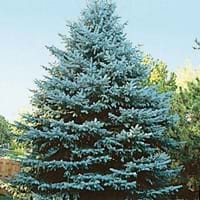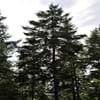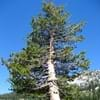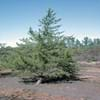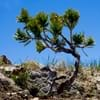Life Span
Perennial
Perennial
Type
Needled or Scaled Evergreen
Needled or Scaled Evergreen
Origin
Northeastern United States, North-Central United States, Alaska, Canada
Western United States
Types
Oriental spruce, Bog spruce, Weeping spruce
Norway Spruce, White Spruce, Picea omorika
Habitat
Moist Soils, Slopes, Swamps, Well Drained
Rocky areas, stream banks, Woodland Garden Canopy
USDA Hardiness Zone
1-6
2-8
Sunset Zone
A1, A2, A3, 1a, 1b, 2a, 2b, 3a, 3b, 4, 5, 6, 7
A2, A3, 1a, 1b, 2a, 2b, 3a, 3b, 4, 5, 6, 7, 8, 9, 10, 14, 15, 16, 17
Habit
Narrow Upright/Fastigiate
Pyramidal
Flower Color
White
Green, Orange, Purple
Flower Color Modifier
Bicolor
Bicolor
Leaf Color in Spring
Green, Sea Green, Blue Green, Gray Green
Green, Blue Green, Steel Blue
Leaf Color in Summer
Blue Green, Gray Green
Green, Blue Green, Steel Blue
Leaf Color in Fall
Blue Green, Gray Green
Green, Blue Green, Steel Blue
Leaf Color in Winter
Blue Green, Gray Green, Dark Green
Blue Green, Gray Green, Steel Blue
Leaf Shape
Needle like
Needle like
Plant Season
Spring, Summer, Fall, Winter
Spring, Summer, Fall, Winter
Sunlight
Full Sun, Partial Sun
Full Sun, Partial Sun
Type of Soil
Clay, Loam
Loam
The pH of Soil
Acidic, Neutral
Acidic, Neutral
Soil Drainage
Average
Average
Bloom Time
Not Available
Early Spring, Late Spring, Mid Spring
Tolerances
Drought
Drought
Where to Plant?
Ground
Ground
How to Plant?
Cuttings, Seedlings
Seedlings, Semi-ripe cuttings
Plant Maintenance
Medium
Medium
Watering Requirements
Average Water Needs, Do Not over Water, Requires regular watering
Average Water Needs, Do Not over Water, Requires regular watering
In Summer
Lots of watering
Lots of watering
In Spring
Moderate
Moderate
In Winter
Average Water
Average Water
Soil pH
Acidic, Neutral
Acidic, Neutral
Soil Type
Clay, Loam
Loam
Soil Drainage Capacity
Average
Average
Sun Exposure
Full Sun, Partial Sun
Full Sun, Partial Sun
Pruning
Pinch Tips, Remove crossing or rubbing branches, Remove damaged leaves, Remove dead branches, Remove dead leaves, Remove dead or diseased plant parts
Prune in winter, Remove crossing or rubbing branches, Remove damaged leaves, Remove dead branches, Remove dead leaves, Remove dead or diseased plant parts
Fertilizers
All-Purpose Liquid Fertilizer
Apply 10-10-10 amount, slow-release fertilizers
Pests and Diseases
Red blotch
Red blotch
Plant Tolerance
Drought
Drought
Flower Petal Number
Single
Single
Fragrant Bark/Stem
No
Yes
Foliage Texture
Fine
Medium
Foliage Sheen
Glossy
Glossy
Allergy
Dermatitis
allergic reaction, Anaphylaxis, Asthma, Hay fever, Pollen, Respiratory problems, Runny nose, Watery eyes
Aesthetic Uses
Showy Purposes
Showy Purposes, Used as Christmas tree
Beauty Benefits
Good for skin
Not Available
Environmental Uses
Air purification, Shadow Tree
Air purification, Windbreak
Medicinal Uses
anti-inflammatory, Disinfectant, Kidney problems, Odontalgic, Poultice, Salve, Stomachic, tuberculosis, Vulnerary
Not Available
Part of Plant Used
Flowers, Inner Bark, Seeds
Flowers, Inner Bark, Seeds
Other Uses
Disinfectant, Gum, Paper pulp, Pitch, String, Used as a dye, Used in paper industry, Waterproofing
Paper pulp, Wood is used in construction
Used As Indoor Plant
No
No
Used As Outdoor Plant
Yes
Yes
Garden Design
Bog Garden, Screening, Wind Break
Container, Feature Plant, Foundation, Mixed Border, Rock Garden, Wall, Screening, Wind Break
Botanical Name
PICEA mariana
PICEA pungens
Common Name
Black Spruce, Bog Spruce, Swamp Spruce
Colorado blue spruce
In Hindi
Black Spruce Tree
Blue Spruce Tree
In German
Schwarz Fichte
Blue Spruce Baum
In French
Noir Épicéa
Blue Spruce Arbre
In Spanish
Negro árbol de abeto
Blue Spruce Árbol
In Greek
Μαύρο Spruce Tree
Blue Spruce Tree
In Portuguese
Árvore Spruce Preto
Árvore Spruce azul
In Polish
Czarny Świerk Drzewo
Blue Spruce Drzewo
In Latin
Niger abiegnis
Blue abiegnis
Phylum
Coniferophyta
Coniferophyta
Class
Pinopsida
Pinopsida
Clade
Not Available
Not Available
Tribe
Not Available
Not Available
Subfamily
Pinoideae
Piceoideae
Number of Species
Not Available
Importance of Black Spruce and Colorado Spruce
Want to have the most appropriate plant for your garden? You might want to know the importance of Black Spruce and Colorado Spruce. Basically, these two plants vary in many aspects. Compare Black Spruce and Colorado Spruce as they differ in many characteristics such as their life, care, benefits, facts, etc. Every gardener must at least have the slightest clue about the plants he wants to plant in his garden. Compare their benefits, which differ in many ways like facts and uses. The medicinal use of Black Spruce is anti-inflammatory, Disinfectant, Kidney problems, Odontalgic, Poultice, Salve, Stomachic, tuberculosis and Vulnerary whereas of Colorado Spruce is Not Available. Black Spruce has beauty benefits as follows: Good for skin while Colorado Spruce has beauty benefits as follows: Good for skin.
Compare Facts of Black Spruce vs Colorado Spruce
How to choose the best garden plant for your garden depending upon its facts? Here garden plant comparison will help you to solve this query. Compare the facts of Black Spruce vs Colorado Spruce and know which one to choose. As garden plants have benefits and other uses, allergy is also a major drawback of plants for some people. Allergic reactions of Black Spruce are Dermatitis whereas of Colorado Spruce have allergic reaction, Anaphylaxis, Asthma, Hay fever, Pollen, Respiratory problems, Runny nose and Watery eyes respectively. Having a fruit bearing plant in your garden can be a plus point of your garden. Black Spruce has showy fruits and Colorado Spruce has showy fruits. Also Black Spruce is flowering and Colorado Spruce is flowering. You can compare Black Spruce and Colorado Spruce facts and facts of other plants too.
